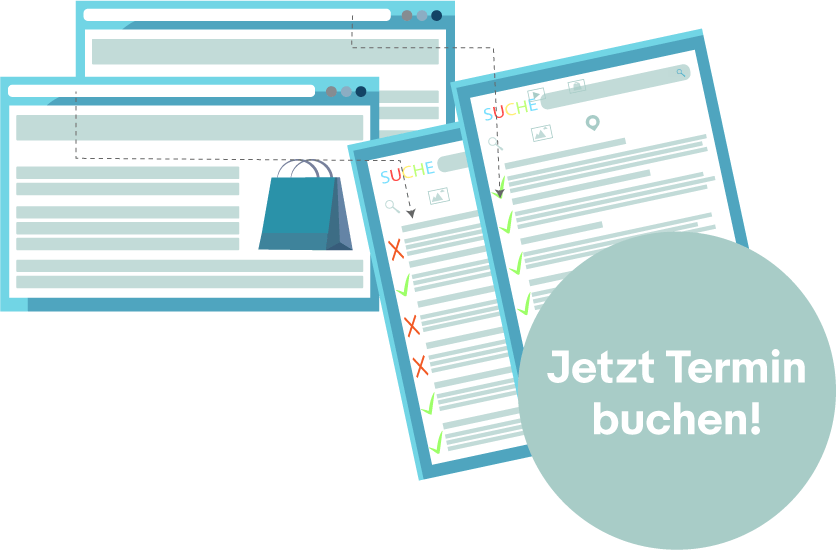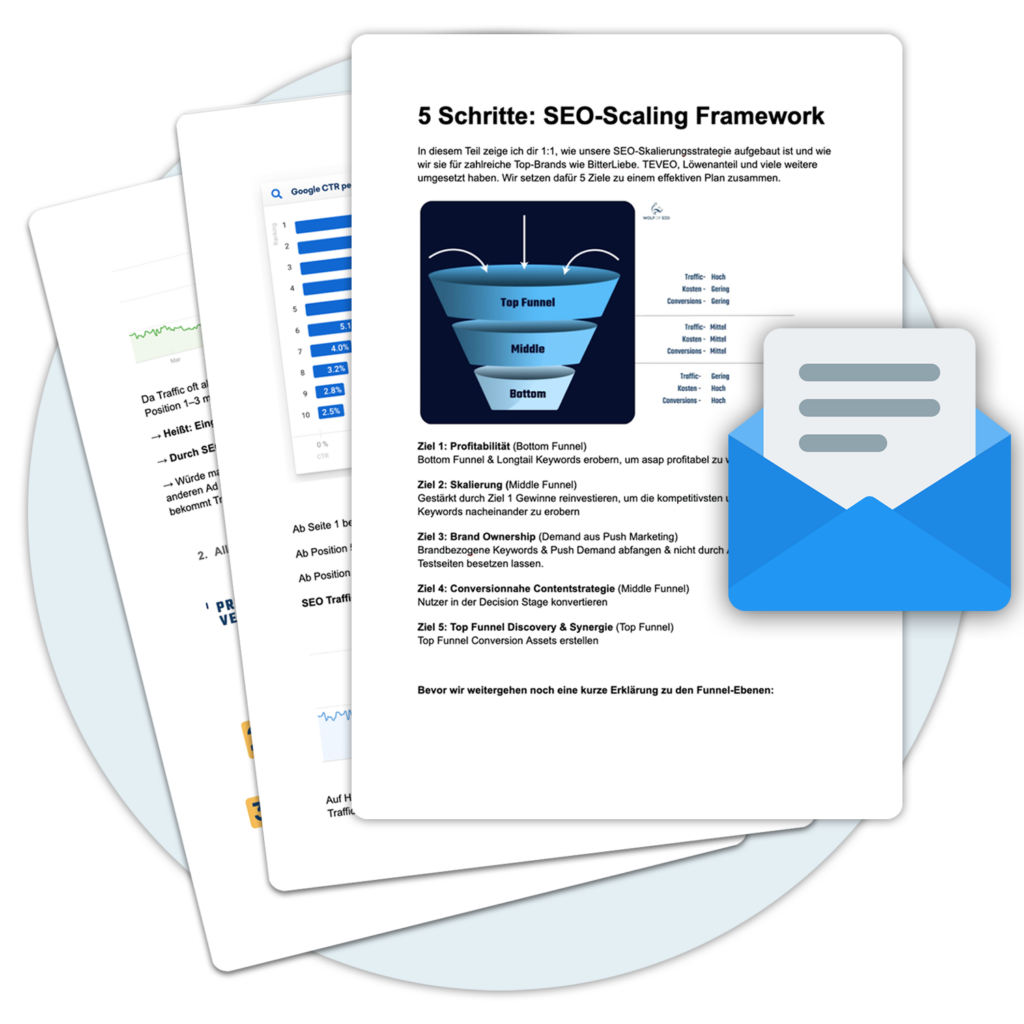What is Google Dorking
Google Dorkingoften referred to as Google Hacking, uses advanced search commands to uncover security vulnerabilities in computer programs through Google searches or to extract sensitive information from the Internet that is not readily accessible. This technique is based on the application of specific search parameters - known as Google dorks - which allow it to penetrate deeper into the data structures of websites to uncover hidden information. This method was originally put into practice in 2002 by computer security expert Johnny Long and has been continuously developed ever since.
The core aspects of Google Dorking
At its core is based Google Dorking auf der Verwendung bestimmter Suchoperatoren wie „site:“, „inurl:“, „filetype:“ und ähnlichen, die es Suchenden ermöglichen, die Google-Suche in einer Weise zu verfeinern, die über einfache Textsuchen hinausgeht. Diese Operatoren können in Kombination verwendet werden, um spezifische Dateitypen, Seiten oder sogar Wörter innerhalb von Websites zu finden, die sensible Daten wie Passwörter, Nutzerinformationen oder Details zu Sicherheitslücken enthalten könnten.
Google Dorking in practice
The use of Google dorks ranges from ethically unethical searches for publicly available information to questionable practices that attempt to infiltrate unprotected websites and servers. For example, companies can Google Dorking to analyze information about their own online presence and marketing strategies. On the other hand, cybercriminals can use the same techniques to collect sensitive data for criminal purposes such as identity theft or unauthorized access to databases.
The legal gray area and protective measures
While the use of Google Dorking is legal in itself, the tide quickly turns when it is used to breach security measures or access proprietary information. This legal borderline makes it a controversial topic both in the cybersecurity community and beyond. To protect against the risks of Google Dorking it is essential to use strong passwords, perform regular security checks and use a fully configured robots.txt file to deny search engine bots access to sensitive areas of a website. Advanced security solutions, such as those offered by Imperva Bot Management and Prevoty, provide additional protection against such attacks and vulnerabilities.
Google Hacking Database and its role
The Google Hacking Database (GHDB) is an extensive collection of so-called Google-Dorks. These specialized search queries help to track down information that would not be so easy to find using conventional search methods. The special thing about the GHDB is that it is explicitly designed to uncover security vulnerabilities, incorrect configurations of web servers, unprotected sensitive data and similar weaknesses. It serves as a resource for security experts to detect and fix systematic problems on the web.
A tool for safety and a warning of the risks
While the database was originally created with the aim of supporting the work of cyber security experts, it also highlights the potential dangers that can arise from the careless publication or poor securing of information on the internet. Through regular updates, new vulnerabilities and security alerts are added to the GHDB, making it a living tool that reflects the evolution of the web and its security risks.
The role of the GHDB in the prevention of cyber attacks
In this respect, the GHDB not only serves to identify existing security vulnerabilities, but also to have a preventative effect. By revealing how information can be unintentionally accessed through simple search queries, it sensitizes web developers and administrators to the need to better protect their systems. Effective measures such as the implementation of robust robots.txt Files or regular website audits can significantly help to mitigate the risks that could arise from the search techniques collected in the GHDB.
A double-edged sword
Although the GHDB was created with the aim of supporting cybersecurity efforts, it is also a tool that can cause harm in the wrong hands. The accessibility of these powerful search commands has sparked discussions about ethical use and the need for greater attention and possible regulation of this area. This makes the GHDB an example of the fine line between the benefits and dangers that specialized tools can bring to the digital world.
Legal aspects of Google Dorking
The legal classification of Google Dorking operates in a gray area. The process itself of using special search commands in Google to track down information or vulnerabilities is basically legal. However, this changes abruptly as soon as Google Dorking is used to prevent unauthorized access to protected data. erlangen or to penetrate systems. Such actions exceed the limits of legality and can have serious legal consequences.
Limits of legality
One of the key questions that determine the legality of Google Dorking is authorization. Even though finding data or vulnerabilities through Google searches may not be illegal per se, using this information without the permission of the data owner quickly becomes a violation of the law. This is especially true when such information is used for criminal activities, such as Cyber Attacksdata theft or cyberstalking.
Legal consequences and responsibility
The legal consequences of the improper use of Google Dorking can be far-reaching and vary depending on the country and the specific offense. They range from fines and prison sentences to civil lawsuits. Given the potential damage that can be caused by unauthorized access to sensitive data, legislators and law enforcement agencies are taking such offenses increasingly seriously. This also includes involvement in cybercrime cases in which Google Dorking was used as a tool.
The need for ethical guidelines
In view of the ambivalence of Google Dorking the demand for ethical guidelines for the use of such search techniques is becoming ever louder. This includes, on the one hand, sensitizing users to the potential dangers and legal pitfalls and, on the other, developing industry standards that clearly define what constitutes responsible use of such tools. This should ensure that Google Dorking can continue to be used as a tool to improve cybersecurity without compromising the privacy and security of individuals and organizations.
Protective measures against Google Dorking
Prevention and protection against Google Dorking require a prudent approach at both a technical and organizational level. An effective defence strategy against such search methods protects sensitive data and systems from unwanted access and minimizes the risks of a data leak or security breach.
Robust configuration of the robots.txt file
One of the basic measures is the implementation of a carefully configured robots.txt file. This file gives search engine bots instructions as to which areas of a website indexed may and may not be used. Through the targeted exclusion of sensitive Directories and files from indexing, access via Google searches can be significantly restricted.
Consciously manage sensitive information
Another important step is the conscious management and restriction of sensitive information on websites. Documents, databases or administration areas should never be left unprotected in the public area of a website. Access controls, encryption methods and authentication procedures are crucial to ensure that only authorized users have access to sensitive areas.
Regular audits and safety checks
Regular audits of your own web presence can help to identify unintentionally released information or security vulnerabilities before they can be exploited by outsiders. Tools and services such as Imperva Bot Management or Prevoty offer advanced security features specifically designed to detect and block attempted attacks and unwanted access.
In addition, staff training on cybersecurity practices and the risks associated with cybersecurity must be provided. Google Dorking are an effective way to raise awareness of this threat. Employees should be encouraged to use strong and unique passwords for different services and change them regularly to further increase security.
Ultimately, protection against Google Dorking continuous adaptation and updating of security measures. As new techniques and tools are regularly developed by attackers, the defense strategies must also be regularly updated to guarantee effective protection.
Google-Dorks: Commands and techniques
The practice of Google Dorking utilizes a series of specific commands and search techniques that make it possible to locate hidden, sensitive or otherwise hard-to-find information on the Internet. These commands, also known as Google dorks, utilize Google's advanced search capabilities to find the Search results to filter and refine them in a targeted manner.
Basic Google dorks and their application
Some of the basic and most commonly used Google Dork commands include:
- site: Restricts the search to a specific website or domain.
- intitle: Finds pages whose titles contain the specified text.
- inurl: Targets URLs that contain the specific text.
- filetype: Searches for files of a specific type, such as PDF, DOCX or CSV.
- intext: Searches for specific text within the content of a page.
By combining these and other operators, users can create precise search queries that allow them to gain deep insights into the structure and content of the target websites. erlangen.
Advanced techniques and their possible target scenarios
In addition to the basic commands, there are advanced techniques that can be used for more specific purposes. For example, the use of Google dork operators in combination can lead to uncovering unprotected server interfaces, unsecured camera access or unauthorized access to sensitive areas of a website. These techniques require a deep understanding of search operators and their potential impact on data security.
Safety awareness and ethical concerns
Although Google dorks are a powerful tool in the arsenal of information security professionals, their existence also underscores the need for increased security awareness among web developers and administrators. Understanding how such searches work and what information could potentially be exposed is crucial to taking preventative measures and securing one's web presence. The ethical implications of using Google dorks are also a point of discussion that requires conscious action and an examination of the legal framework in order to avoid misuse.
The ethical concerns of using Google Dorking
The use of Google Dorking raises a number of ethical issues that include both the intention of the user and the potential impact on the target objects. While Google Dorking can be a powerful tool for cybersecurity professionals and researchers, there is a risk that these same techniques can be misused to gain unauthorized access to sensitive data. erlangen or privacy.
The thin line between research and injury
A critical aspect of the ethical concerns surrounding the use of Google Dorking lies in the distinction between legitimate research and the violation of data protection. The intention with which Google dorks are used plays a central role. Security experts often use this technique to uncover and fix vulnerabilities in systems, which helps improve digital security in the long run. However, when the same tools are used to exploit unprotected information for malicious purposes, the act shifts into the realm of unethical behavior.
Responsibility and education
Another important point concerns the responsibility of those who have knowledge of Google Dorking have at their disposal. There is an ethical obligation to use knowledge and skills responsibly and also to educate about the risks and potential abuses. Promoting awareness of the correct security practices and ethical principles in the use of information technology is essential to avoid misunderstandings and make the digital environment safer for all.
Ethical guidelines and self-regulation
The development of and adherence to ethical guidelines by the cybersecurity community can help to minimize the use of Google Dorking within moral boundaries. Such guidelines should consider not only the legal aspects, but also the potential harm to individuals or organizations that can result from careless or malicious use. Community self-regulation, through the sharing of best practices and the marking of red lines, is fundamental to maximizing the positive applications of Google Dorking and at the same time minimize the risk of abuse.
Combating Google hacking: tools and best practices
In the fight against Google hacking, various tools and methods are available that can help to increase the security of data on the network and minimize the risks of unwanted indexing or access. By applying best practices and using specialized security tools, vulnerability to attacks can be significantly reduced.
Security tools to defend against Google hacking
Specialized tools exist to defend against Google hacking attacks, which are able to identify and block unwanted search queries. These include solutions such as Imperva Bot Management and Prevoty, which are specifically designed to protect web applications from automated attacks and other vulnerabilities. These tools offer advanced features such as real-time monitoring, attack detection and automated response mechanisms to ensure the integrity and security of online resources.
Best practices for minimizing risks
- Robust robots.txt file: A carefully configured
robots.txt-file can prevent search engines from indexing sensitive areas of a website. The targeted blocking of pages or directories can significantly reduce the visibility of information that should not be publicly accessible. - Regular safety audits: By regularly checking your own online presence for vulnerabilities and security gaps, potential risks can be identified and rectified at an early stage. This includes monitoring server logs and using web scanners to detect unwanted access.
- Awareness and training: Awareness of the risks and techniques of Google hacking is crucial for both developers and administrators. Targeted training measures can sensitize employees and inform them about the importance of security measures.
- Use of strong passwords and authentication procedures: Strong passwords and multi-level authentication procedures increase the security of administration areas and sensitive data.
The combination of advanced security tools and the consistent implementation of best practices forms the basis for efficient protection against Google hacking. By minimizing potential attack vectors and proactively closing security gaps, the risks of unauthorized access can be significantly reduced. However, this requires a continuous effort and commitment from all stakeholders to keep pace with the ever-evolving threat landscape.
« Back to Glossary Index






